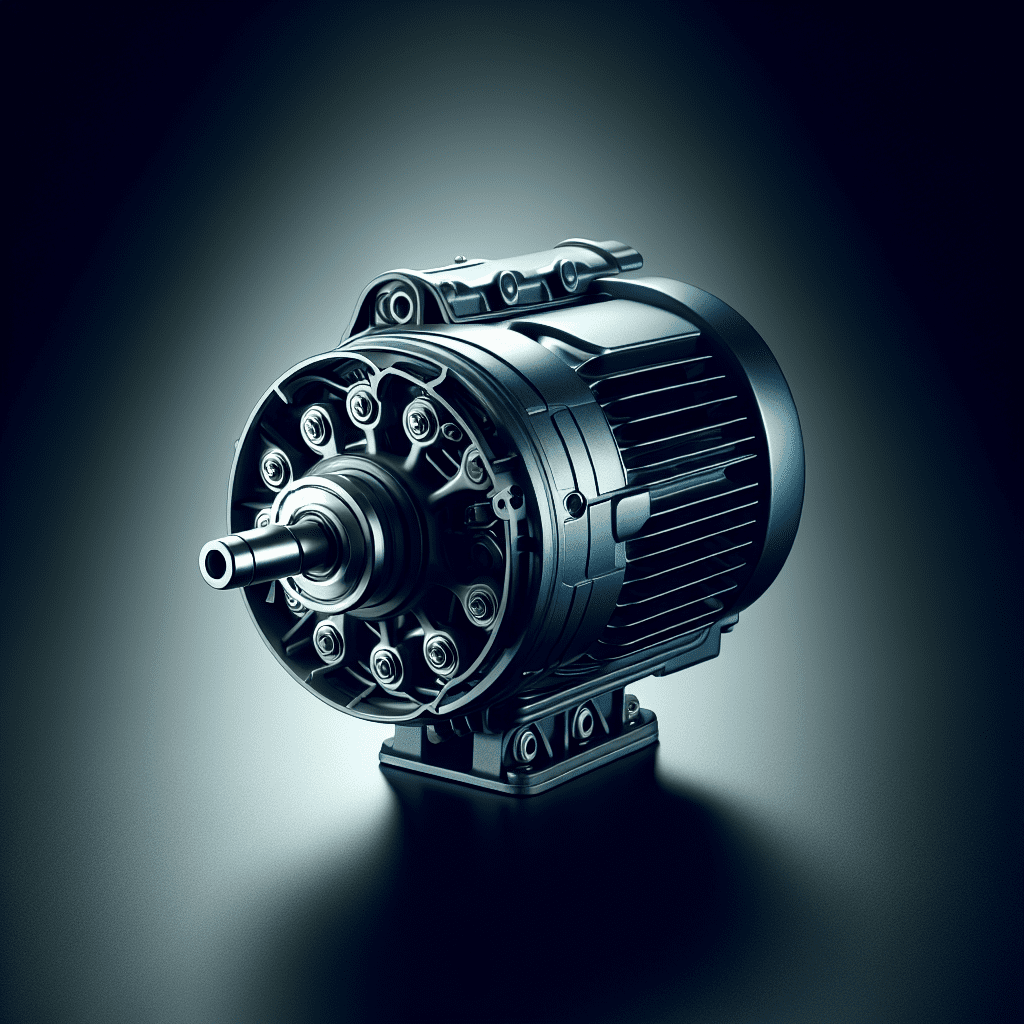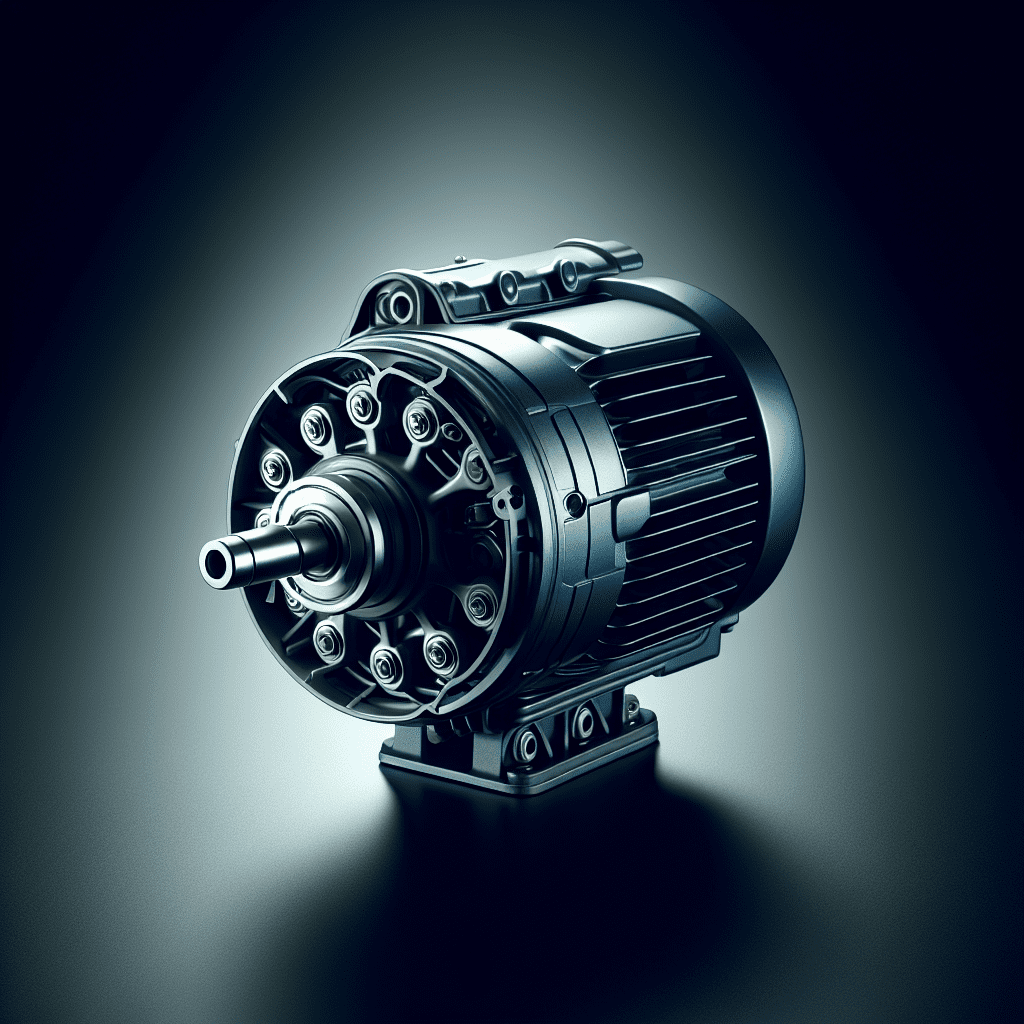In the world of electric bikes, the realm of motors holds a fascinating variety of options to choose from. With an array of choices available, it’s important to understand the different types of electric bike motors and how they differ. From hub motors to mid-drive motors, each type offers its own unique advantages and features. So, whether you’re a seasoned rider or someone just starting to dip your toes in the world of electric bikes, let’s explore the world of electric bike motors together and uncover the wonders that lie beneath their sleek exteriors.

Hub Motors
What are Hub Motors?
Hub motors are a type of electric bike motor that is integrated into the hub of the wheel. They are commonly used in electric bikes and offer several advantages over other motor types. With hub motors, the motor is enclosed within the wheel hub, providing a compact and streamlined design.
Direct Drive Hub Motors
Direct drive hub motors are a popular type of hub motor. They deliver power directly to the wheel without the need for additional gearing, making them simple and low maintenance. Direct drive hub motors are known for their high torque output, which allows for better acceleration and climbing abilities. They also provide regenerative braking, meaning that energy is captured and stored when you brake, helping to extend your battery life.
Geared Hub Motors
Geared hub motors, on the other hand, utilize an internal set of gears to increase the torque output. Although they may not offer as much torque as direct drive hub motors, geared hub motors are lighter and more efficient. They can achieve higher speeds, making them ideal for riders who prioritize speed over torque. Geared hub motors tend to be quieter and offer a smoother ride due to their internal gearing system.
Comparison between Direct Drive and Geared Hub Motors
When choosing between direct drive and geared hub motors, it is important to consider your specific needs and preferences. Direct drive hub motors are well-suited for those seeking higher torque and better climbing abilities. However, they are usually heavier and may not be as efficient at high speeds. Geared hub motors, on the other hand, are lighter, more efficient, and better suited for riders who prioritize speed. Ultimately, the choice between direct drive and geared hub motors depends on your riding style and the terrain you plan to tackle.
Mid-drive Motors
Understanding Mid-drive Motors
Mid-drive motors, also known as central motors, are positioned near the bike’s bottom bracket, where the pedals and crankset are located. Unlike hub motors, mid-drive motors transfer power through the bike’s chain and gears, allowing the motor to take advantage of the bike’s existing gears. This makes mid-drive motors highly efficient and versatile, as they can leverage the bike’s gear range to provide optimal power delivery.
Advantages of Mid-drive Motors
One of the main advantages of mid-drive motors is their ability to leverage the bike’s gears effectively. By working in conjunction with the gears, mid-drive motors can provide the rider with a smooth and efficient power assistance. This is particularly useful when tackling various terrains, as the rider can easily shift gears to find the most comfortable and efficient power output. Additionally, mid-drive motors are generally more balanced and provide a more natural riding experience, as the weight distribution is kept low and centered.
Disadvantages of Mid-drive Motors
Despite their numerous advantages, mid-drive motors do have some drawbacks. One of the main disadvantages is that they can put more stress on the bike’s drivetrain, specifically the chain and gears. The increased torque and power delivery from the mid-drive motor can cause faster wear and tear on these components, requiring more frequent maintenance and replacements. Additionally, mid-drive motors tend to be more expensive compared to hub motors, making them less accessible for some riders.
Comparison between Hub Motors and Mid-drive Motors
When comparing hub motors and mid-drive motors, it is crucial to consider the specific requirements and riding conditions. Hub motors provide a simple and reliable solution, with direct drive hub motors offering high torque and regenerative braking capabilities. Mid-drive motors, on the other hand, are more versatile and efficient, leveraging the bike’s gears for enhanced performance.
Hub motors are better suited for riders who prioritize simplicity, low maintenance, and strong torque for climbing hills. Mid-drive motors, on the other hand, are ideal for riders who value efficiency, versatility, and a more natural riding experience. Ultimately, the choice between hub motors and mid-drive motors depends on your riding style, terrain, and personal preferences.

Brushed Motors
Introduction to Brushed Motors
Brushed motors are a type of electric bike motor that has been widely used for many years. They consist of a rotating armature, stationary magnets, and carbon brushes that allow for the flow of electrical current. Brushed motors have a simple and robust design, making them suitable for various applications, including electric bikes.
How Brushed Motors Work
In a brushed motor, electrical current is supplied to the rotating armature through the carbon brushes. As the armature spins, it creates a magnetic field that interacts with the stationary magnets, generating rotational motion. This rotational motion is then transferred to the bike’s drivetrain, propelling the bike forward. Brushed motors can operate in both directions, allowing for reverse motion as well.
Pros and Cons of Brushed Motors
One of the main advantages of brushed motors is their simplicity and reliability. They have a straightforward design, requiring minimal maintenance and servicing. Brushed motors are also more affordable compared to other motor types, making them an attractive option for budget-conscious riders.
However, brushed motors also have some drawbacks. They tend to be less efficient compared to brushless motors, meaning that they consume more energy for the same output. Additionally, the carbon brushes in brushed motors wear out over time and need to be periodically replaced, resulting in increased maintenance costs. The brushes can also generate friction and heat, reducing overall motor efficiency.
Despite their limitations, brushed motors continue to be used in certain electric bike applications, particularly those that prioritize simplicity and cost-effectiveness over high performance and efficiency.
Brushless Motors
Overview of Brushless Motors
Brushless motors, as the name suggests, do not incorporate brushes like their brushed counterparts. Instead, they utilize electronic commutation to achieve a more efficient and reliable operation. Brushless motors have become increasingly popular in electric bikes due to their improved performance and reduced maintenance requirements.
Working Principle of Brushless Motors
In a brushless motor, the electromagnets are located on the rotor (armature), while the permanent magnets are positioned on the stator (stationary part). As the rotor spins, the electronic controller precisely regulates the timing and sequence of the electromagnets, ensuring optimal power delivery. This electronic commutation eliminates the need for brushes, resulting in a more efficient and durable motor.
Advantages and Disadvantages of Brushless Motors
One of the main advantages of brushless motors is their higher efficiency compared to brushed motors. By eliminating brushes, brushless motors experience less friction and heat generation, resulting in improved energy conversion. This increased efficiency allows for longer battery life and extended riding range.
Brushless motors also offer higher torque and power-to-weight ratios, making them ideal for electric bikes that require quick acceleration and higher top speeds. They are generally more responsive and provide a smoother, quieter ride compared to brushed motors.
However, brushless motors tend to be more expensive compared to brushed motors, primarily due to the advanced electronic controller and the use of permanent magnets. Additionally, brushless motors require more complex control systems, adding to the complexity and cost of the overall electric bike.
Despite the higher initial cost, the improved performance, efficiency, and reduced maintenance requirements make brushless motors a popular choice among electric bike enthusiasts.

Throttle-based Motors
Understanding Throttle-based Motors
Throttle-based motors, also known as twist-and-go motors, are a type of electric bike motor that provides power assistance based on throttle input. With throttle-based motors, you have complete control over the power output and can easily regulate the speed of your electric bike by twisting the throttle.
Benefits of Throttle-based Motors
One of the main benefits of throttle-based motors is the instant and on-demand power delivery. With just a twist of the throttle, you can quickly accelerate and reach your desired speed. Throttle-based motors are also convenient for riders who may have limited mobility or need immediate power assistance in certain situations, such as tackling steep hills or starting from a standstill.
Throttle-based motors also provide a more relaxed and effortless riding experience. You can easily maintain a constant speed without the need to constantly pedal, which can be especially useful during long-distance rides or when you want to conserve your energy.
Limitations of Throttle-based Motors
Despite their advantages, throttle-based motors have some limitations. The most significant limitation is the dependence on the throttle input for power assistance. This means that you need to actively engage the throttle to receive power, which may not be suitable for riders who prefer a more traditional pedaling experience.
Throttle-based motors also consume more energy compared to pedal-assist motors since they provide power assistance regardless of the rider’s pedaling effort. This can result in shorter battery life and may require more frequent recharging.
Pedal-assist Motors
What are Pedal-assist Motors?
Pedal-assist motors, also known as electric assist or power-assist motors, are designed to provide power assistance to the rider based on their pedaling effort. Unlike throttle-based motors, pedal-assist motors require the rider to actively pedal in order to receive power assistance.
How Pedal-assist Motors Function
Pedal-assist motors use an integrated sensor system to measure the rider’s pedaling effort and adjust the power output accordingly. The sensors can detect the force, speed, and cadence of the rider’s pedaling motion, allowing the motor to provide optimal power assistance. This means that the harder you pedal, the more power you receive from the motor, making it feel like you have superhuman strength.
Pedal-assist motors typically offer multiple levels of assistance, allowing you to choose the desired level of power output according to your needs and preferences. Some pedal-assist systems even offer specific modes, such as eco, normal, and sport, to further customize the riding experience.
Advantages and Disadvantages of Pedal-assist Motors
One of the main advantages of pedal-assist motors is their ability to provide a more natural and intuitive riding experience. Since the motor responds to your pedaling effort, it feels like an extension of your own power. This makes pedal-assist motors ideal for riders who want to maintain an active and healthy lifestyle while enjoying the benefits of electric assistance.
Pedal-assist motors also tend to be more energy-efficient compared to throttle-based motors. Since the motor only provides assistance when you actively pedal, the battery life can be significantly extended, allowing for longer rides without the need for recharging.
However, pedal-assist motors may not offer the same level of instant power delivery as throttle-based motors. It may take a moment for the motor to respond to your pedaling effort, especially when starting from a standstill. Additionally, pedal-assist motors require more active engagement from the rider, as power assistance is dependent on pedaling input.

Sensored Motors
Introduction to Sensored Motors
Sensored motors, also known as sensor-based motors, utilize sensors to accurately measure the position and speed of the motor’s rotating components. These sensors provide feedback to the motor’s control system, enabling precise control and power delivery.
Working of Sensored Motors
In a sensored motor, various sensors, such as Hall effect sensors, are strategically placed to detect the position and speed of the motor’s rotor. This information is then sent to the motor’s controller, which adjusts the power delivery and ensures smooth and efficient operation.
The sensors in sensored motors provide crucial feedback that allows for precise control, especially at low speeds or when starting from a standstill. This ensures a smoother and more responsive motor operation, enhancing the overall riding experience.
Benefits and Drawbacks of Sensored Motors
Sensored motors offer several benefits for electric bike riders. One of the main advantages is improved control and responsiveness, especially at low speeds. The sensors provide accurate feedback to the motor controller, allowing for precise power delivery and smoother acceleration. This can be particularly beneficial when navigating urban areas or tight spaces where precise control is essential.
Additionally, sensored motors tend to have smoother and quieter operation compared to sensorless motors. The sensors help to reduce torque ripple and minimize motor vibrations, resulting in a more comfortable and enjoyable ride.
However, sensored motors also have some drawbacks. The sensors add complexity and cost to the motor system, making sensored motors more expensive compared to sensorless motors. Additionally, the sensors can be susceptible to damage from external factors such as moisture or dirt, requiring more care and maintenance.
Despite their limitations, sensored motors are favored by riders who prioritize smooth and precise power delivery, making them particularly suitable for urban commuting and leisure riding.
Sensorless Motors
Overview of Sensorless Motors
Sensorless motors, as the name suggests, do not rely on external sensors to determine the position and speed of the motor’s rotating components. Instead, sensorless motors utilize advanced algorithms and the motor’s back electromotive force (EMF) to estimate the motor’s position and adjust the power delivery accordingly.
How Sensorless Motors Operate
Sensorless motors utilize sophisticated algorithms and the motor’s back EMF to estimate the rotor’s position and speed. As the motor rotates, the back EMF creates a voltage that is inversely proportional to the rotor’s speed. By monitoring the back EMF and comparing it to the input voltage, the motor’s control system can calculate and adjust the power delivery.
While sensorless motors do not provide the same level of precise control as sensored motors, modern algorithms have significantly improved their performance. Sensorless motors can now offer smooth and responsive operation, particularly at higher speeds.
Pros and Cons of Sensorless Motors
Sensorless motors offer several advantages, including a lower overall cost compared to sensored motors. By eliminating the need for external sensors, sensorless motors are more cost-effective, making them an attractive option for budget-conscious riders. Sensorless motors also tend to be more resistant to external factors such as dirt and moisture, as there are no physical sensors that can be damaged.
However, sensorless motors may not provide the same level of precise control, especially at low speeds or when starting from a standstill. The estimation algorithms can be less accurate compared to physical sensors, resulting in a slightly less refined power delivery and a potentially less smooth riding experience.
Despite these limitations, sensorless motors are widely used in electric bikes and offer a cost-effective and reliable solution for many riders.

Torque-sensing Motors
Understanding Torque-sensing Motors
Torque-sensing motors are a type of electric bike motor that measures the force exerted by the rider on the pedals and adjusts the power output accordingly. By detecting the rider’s pedaling effort, torque-sensing motors provide a more intuitive and natural power assistance.
Functioning of Torque-sensing Motors
Torque-sensing motors utilize strain gauges or similar sensors that are integrated into the bottom bracket area or the crankset. These sensors measure the force applied by the rider’s legs and transmit this information to the motor’s control system. Based on the detected force, the motor adjusts the power output to provide a seamless and proportional power assistance.
Torque-sensing motors offer a wide range of power assistance, from a gentle boost to a more powerful push, depending on the rider’s pedaling effort. This allows for a more dynamic and responsive riding experience, as the motor adapts to the rider’s needs in real-time.
Advantages and Limitations of Torque-sensing Motors
One of the main advantages of torque-sensing motors is their ability to provide a highly intuitive and natural riding experience. By closely matching the power output to the rider’s pedaling effort, torque-sensing motors create a seamless and harmonious power assistance. This makes them ideal for riders who want to maintain an active and engaging riding style.
Torque-sensing motors also offer excellent efficiency, as they can precisely adjust the power output based on the rider’s needs. This means that the motor only provides assistance when necessary, leading to optimal energy usage and extended battery life.
However, torque-sensing motors tend to be more expensive compared to other motor types, primarily due to the integration of sensors and the advanced control systems. Additionally, some riders may find it challenging to adapt to the additional sensitivity and responsiveness of torque-sensing motors, especially if they are used to a more traditional pedaling experience.
Despite these limitations, torque-sensing motors are highly regarded for their seamless and responsive power delivery, making them a popular choice among enthusiastic electric bike riders.
Power-output Motors
What are Power-output Motors?
Power-output motors, also known as power sensing or cadence-based motors, are a type of motor that adjusts the power output based on the rider’s pedaling cadence. These motors provide a consistent level of power assistance, regardless of the force exerted by the rider, making them suitable for riders who prefer a more relaxed and effortless riding experience.
How Power-output Motors Work
Power-output motors utilize sensors or algorithms to detect the rider’s pedaling cadence, which is the speed at which the rider pedals. Based on the detected cadence, the motor provides a predetermined level of power assistance. This means that the rider can maintain a consistent speed and effort level without needing to adjust their pedaling force.
Unlike torque-sensing motors, power-output motors do not adjust the power output based on the force exerted by the rider. Instead, they offer a fixed level of power assistance, which can be beneficial for riders who prefer a more consistent riding experience.
Benefits and Limitations of Power-output Motors
One of the main advantages of power-output motors is their ability to provide a consistent level of power assistance, regardless of the rider’s pedaling force. This can be particularly useful for riders who want a more relaxed and effortless riding experience or those who prefer to maintain a constant speed without needing to adjust their pedaling effort.
Power-output motors also tend to be more affordable compared to some other motor types, as they require less sophisticated sensors and control systems. This makes them a cost-effective option for riders who prioritize simplicity and price.
However, power-output motors may not provide the same level of customization and dynamic power delivery as other motor types. Since the power assistance is fixed, riders may find it challenging to fine-tune the motor’s output to their specific needs and preferences. Additionally, power-output motors may not offer the same level of responsiveness as torque-sensing motors, as they do not adjust the power output based on the rider’s force exertion.
Despite these limitations, power-output motors are highly regarded for their consistent and effortless power assistance, making them an appealing choice for riders who prioritize comfort and simplicity.
In conclusion, electric bike motors come in various types, each with its own unique characteristics and benefits. Hub motors, whether direct drive or geared, provide compact designs and different torque attributes. Mid-drive motors leverage the bike’s gears for enhanced efficiency and versatility. Brushed motors offer simplicity and cost-effectiveness, while brushless motors provide higher efficiency, power, and reduced maintenance. Throttle-based motors offer instantaneous power control, while pedal-assist motors provide a more natural riding experience. Sensored motors provide improved control and smooth operation, while sensorless motors offer a cost-effective and reliable solution. Torque-sensing motors provide intuitive and proportional power assistance, while power-output motors offer consistent and effortless riding experiences. By understanding the different types of electric bike motors, you can choose the one that best suits your riding style, preferences, and needs. Happy biking!

